World bee day: The honey collective abuzz with plans in Kenya
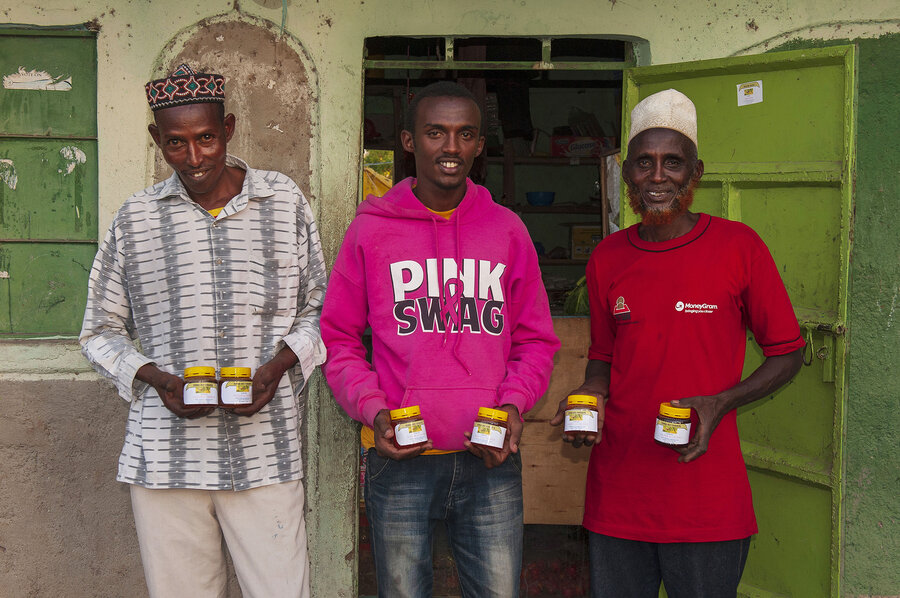
“Honey brings income,” says Rashid. “We eat and drink it and even use it as medicine.”
With almost 20 years of experience in bee farming, the father of ten chairs the Kinna Bee Farmers Association in the arid county of Isiolo in northeast Kenya.
A group of seven men and five women, Kinna's passionate bee farmers are supported by the World Food Programme (WFP) — they are among more than 400,000 people in Kenya’s arid and semi-arid regions the organization empowers through livelihood activities such as fish-farming, and livestock and crop production.
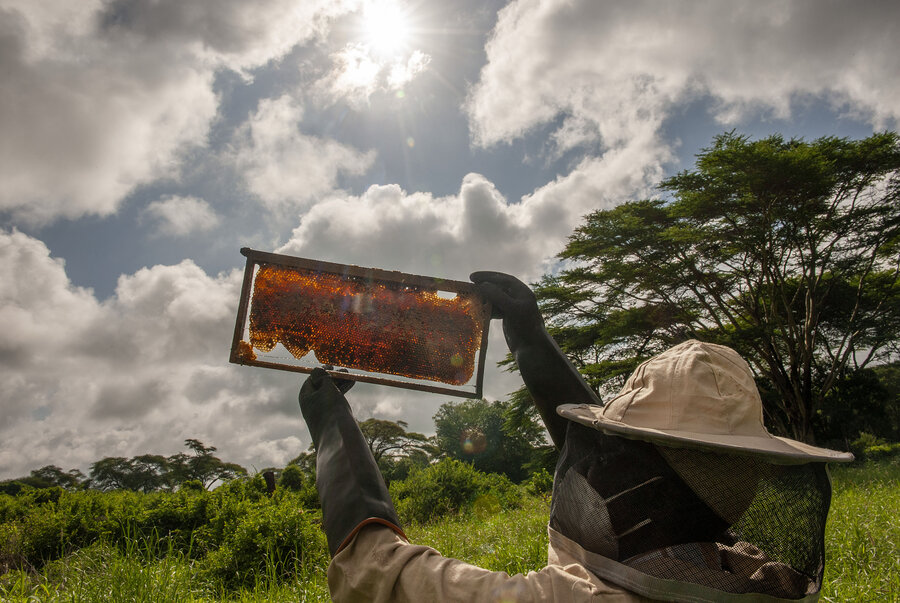
Recurrent climate shocks such as floods and droughts, locust infestations and the coronavirus pandemic pose a constant threat to the rural communities of Isiolo. By encouraging farmers to invest in multiple sources of income, WFP builds the resilience of smallholder farmers to withstand the economic consequences of climate shocks.
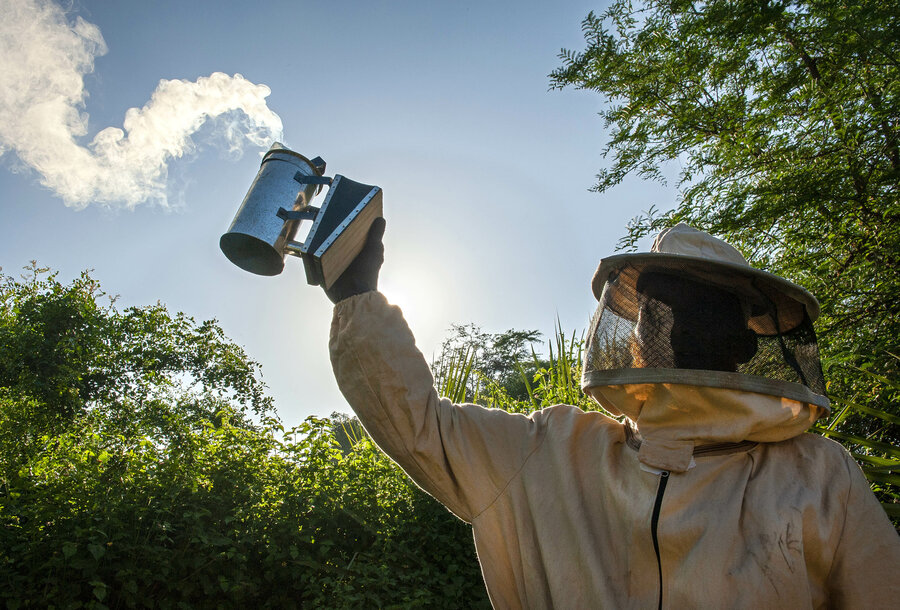
Charles Songok, who heads WFP in Isiolo County, confirms: “Where WFP has implemented livelihood diversification activities such as beekeeping and fish farming, we have seen an improvement in incomes which has helped farmers to cope with the effects of climatic shocks.”
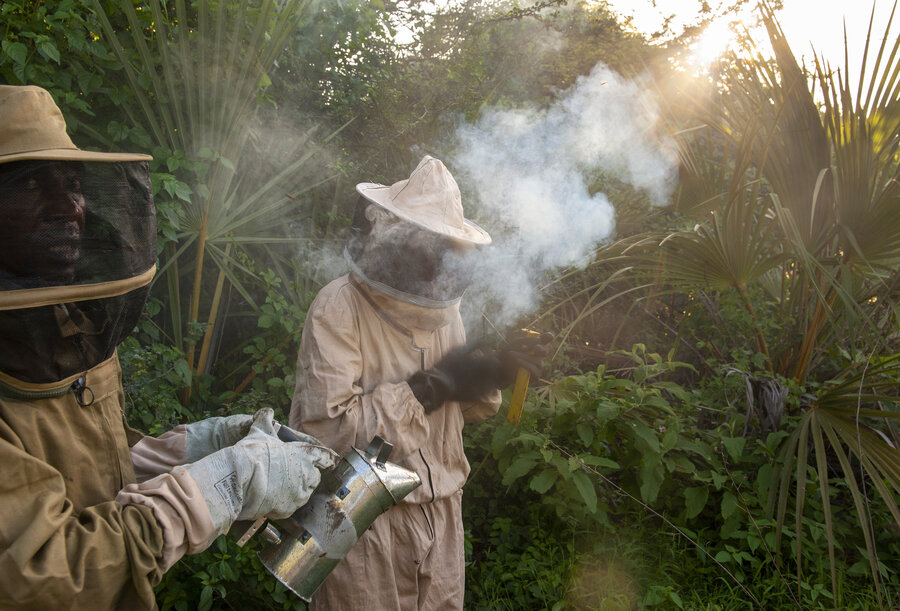
Since 2019, WFP has distributed over 9,000 beehives to farmers in 12 arid and semi-arid regions of Kenya in addition to honey harvesting suits, hive tools, centrifuge machines for extracting honey and refractometers for measuring the water content of honey.
Rashid’s group received 50 beehives from WFP and some honey harvesting suits; 45 of the hives are already colonized and the group is expecting large amounts of honey this year.
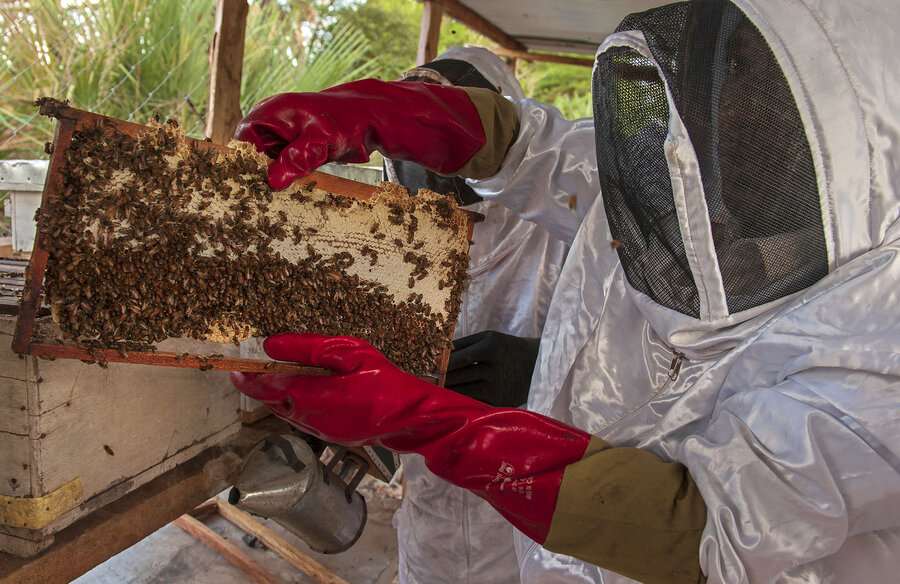
“We’ve never had enough honey to make a profit,” says Rashid. “These 50 hives will bring us more money which we can invest back into the business.”
Consumed as a sweet treat — “My family like to eat honey on a chapati or to mix it with rice,” says Rashid — honey is also used as a traditional medicine for treating colds, allergies and measles in young children.
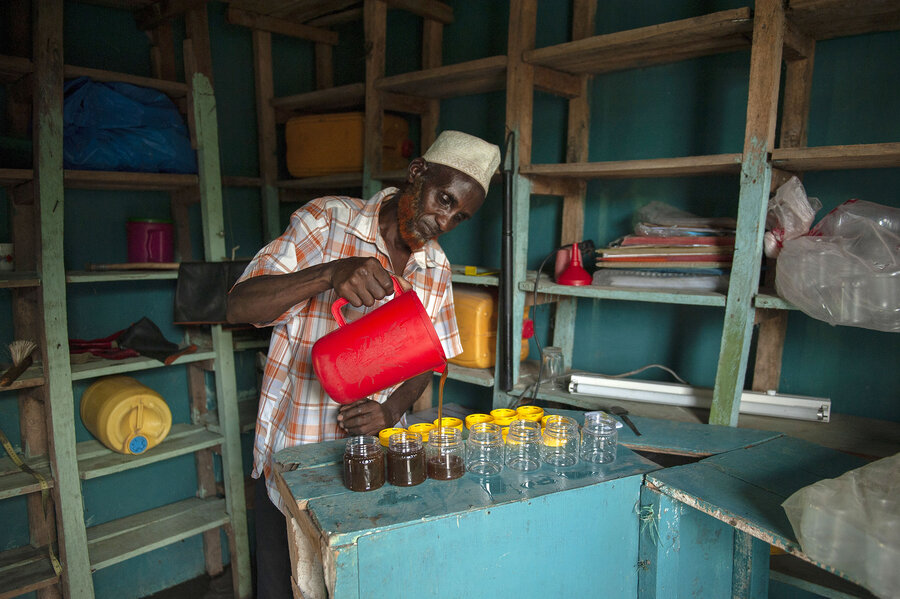
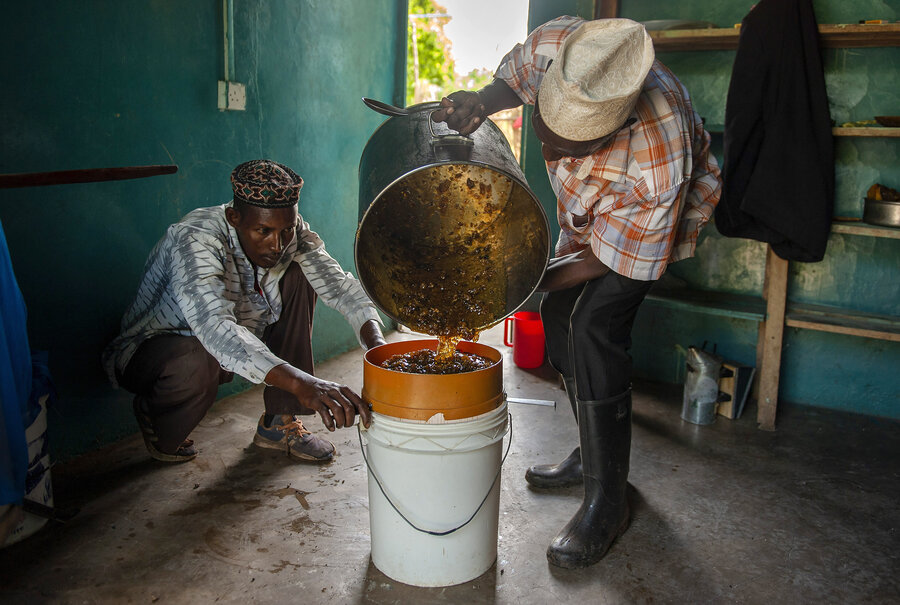
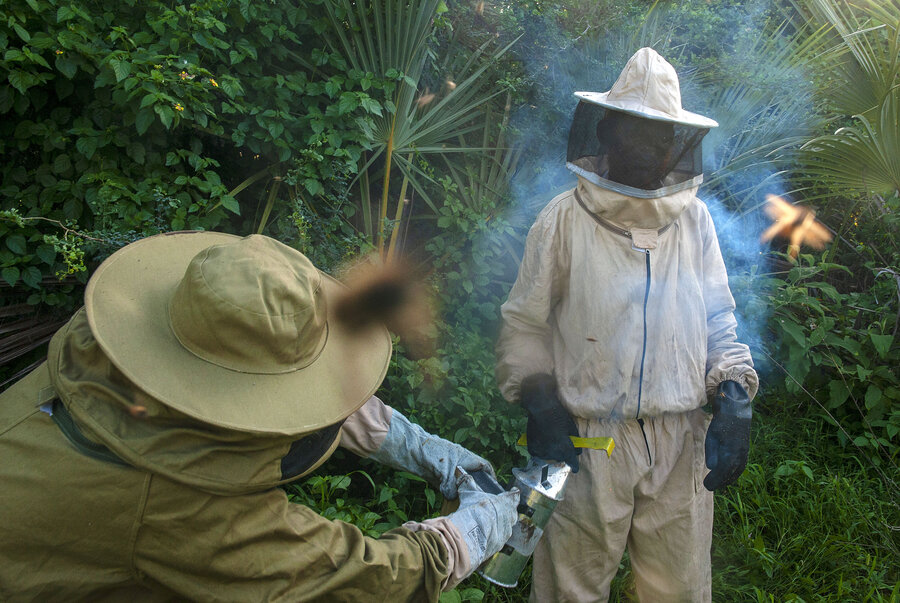
One beehive produces approximately 10kg of honey. When harvests are good, the group sells any surplus through local shops and markets. They have also started processing and refining their own honey with the use of an extractor, as well as packaging and labelling their own jars for sale.
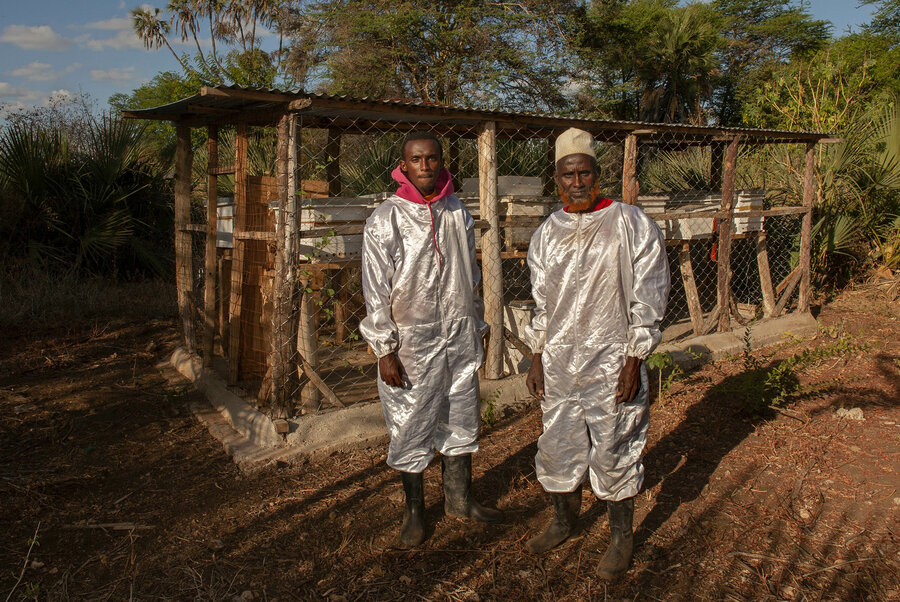
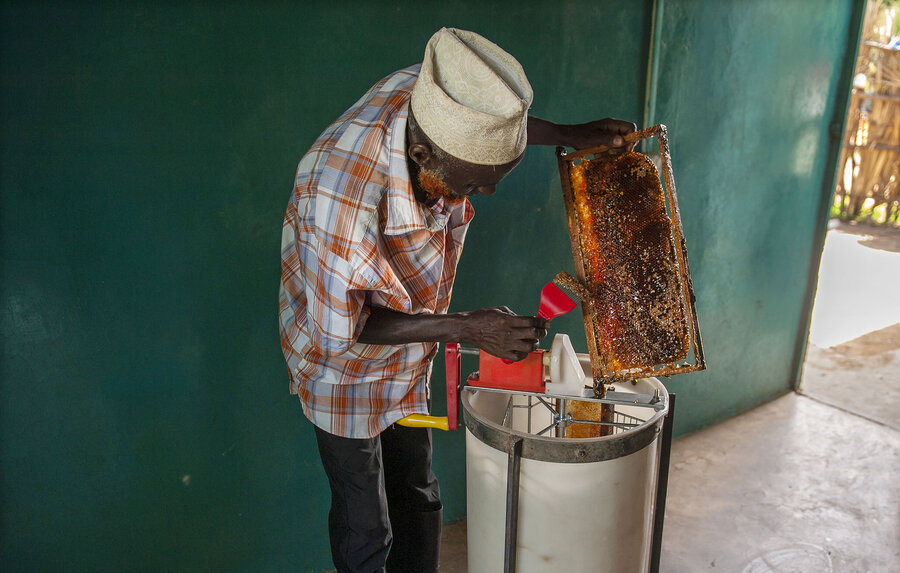
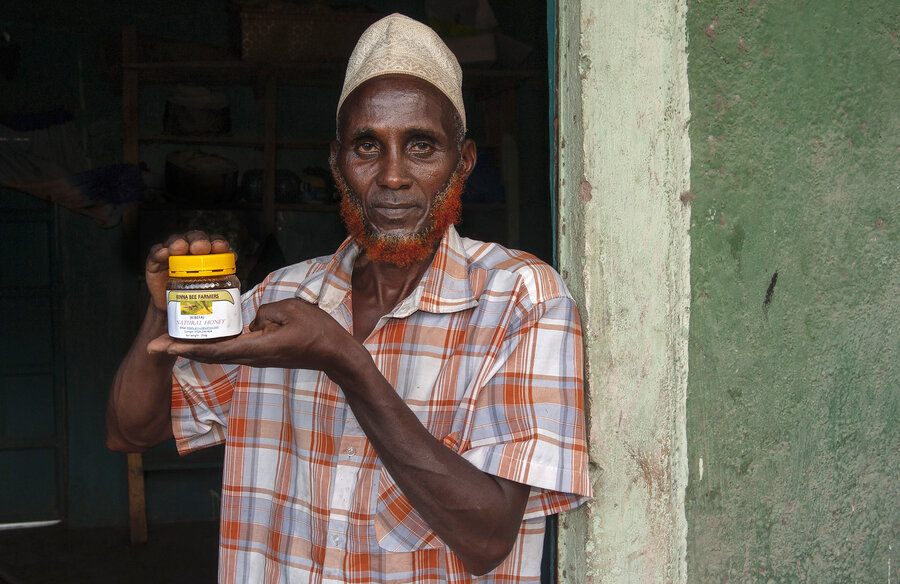
“I hope that one day we can become a honey-collection centre,” says Rashid, "We could buy honey from the area and refine, package and sell it to increase our incomes.”
Has Rashid ever been afraid of bees? No! In fact, he even used to harvest honey with his bare hands. He adds: “Although I feel pain when they sting me, it does not affect me in any way. Maybe it’s because I use a lot of honey!”
Learn more about WFP's work in Kenya
